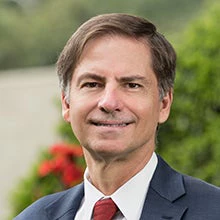También disponible en español

Rewind 20 years. Medellin, Colombia, is the murder capital of the world, with over 300 homicides per 100,000 inhabitants.
Pablo Escobar and his drug trafficking cronies are the heroes of the comunas -- the hillside low-income barrios that oversee the skyscrapers of the modern downtown. Shootings, kidnappings and rampant lawlessness are the stuff of daily headlines. Teenage boys in the comunas want to be Escobar henchmen, quick with the gun and fast with the girls. And after Escobar was killed in a graphic shootout with police in 1994, they dream of becoming paramilitary ‘rambos’, inspired by the violent squads that plagued the countryside since the mid-1990s.
Fast forward to March 2012. Violence has been subsiding in this mountain city of the Colombian Andes, bucking the general trend among large cities in Latin America. A group of colleagues and I are here as part of a study tour of the city. Yes, we are told, the murder rate is down by 80% from its peak in 1990. Comunas are now mostly peaceful, the streets filled with cars, pedestrians, kids riding bicycles. We see the occasional policeman mingling with the locals. We are invited to walk a few blocks in Santo Domingo, the most violent barrio in the early 1990s
We come to a stunning, unorthodox building perched on the hillside that looks like three large interconnected black boulders, a stark contrast to the makeshift architecture of the low-income housing around it, as the picture in this blog shows. We are told this is the Parque Biblioteca España public library, boasting over 1,000 visitors daily, a large collection of books, videos and a free gallery for displays by local artists. There is no graffiti on the walls. A local resident tells us they are very proud to host this new city attraction that brings tourists from around the world. A 10 year old boy offers to tell us details of who built the library, how long it took to build it and why it has had a positive impact on the comuna (all for a voluntary donation of $0.50 cents).
Two hundred yards up from the library we board the gleaming Metro Cable car line ($0.60 cents for a one way ticket), one of 3 lines with 15 stations that now communicate the hillside barrios with the city below. Kids from the comuna attend new schools designed with kid-friendly architectural designs painted in bright colors with facilities that compete with the best in the country.
New approach on crime
We are told by folks from the city administration that over the years they tried many approaches to crime and violence in Medellin, from benign neglect to mano dura (an iron hand). Tanks and heavily armed police raided comunas, only to establish brief periods of peace that lasted only as long as they remained in the area.
Trial and error led to the “unified integrated approach” otherwise known as social urbanism: an unusual mix of social work, innovative infrastructure, and institution building.
Putting this together is truly multi-sectoral: architects come together with social workers, psychologists and urban planners. Artists are engaged to set up theater and music groups. Coaches are asked to set up soccer and basketball clinics in brand new courts.
The head of the planning body for Medellin claims the key has been infrastructure to give comuna residents access to the rest of the city – and of the city to the comuna. A local tells us it is about "feeling like a real citizen of Medellin", deserving of top class infrastructure. A social worker says it is mostly about giving kids things to do, role models to emulate, and space to move away from the violent path.
Not everything is perfect and the Medellin folks may be painting too rosy a story.
The landmark demobilization agreement in 2003 that led to paramilitary groups laying down arms certainly helped.
Youth revolution
When things hit bottom in the late 1990s, inspiring young leaders rose to the occasion, and voters tired of living in fear supported new approaches. Medellin is a growing, industrial and financial center, with resources to spend in innovative schemes. And it is well known for its strong, professional civil service, a lively character and a contagious love of their city.
All this makes me think that Medellin’s experience is not easy to replicate.
However, and in spite all these successes, there are still some hard core neighborhoods where you wander at your own risk.
One local told me “I feel like we have been reborn”. We at the World Bank have a reputation for being hard working technocrats. But somehow I feel we were all touched deeply by the optimism and raw energy of folks we met in Medellin, who brought back their city from the brink.


Join the Conversation